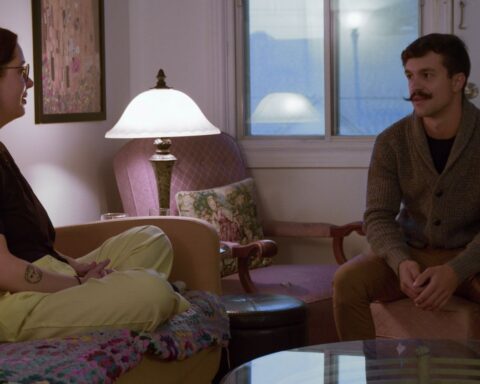Brasilia: Life After Design
(Canada, 88min.)
Dir. Bart Simpson
Through scrutinizing the complexities behind Brasilia’s glossy surface and embracing its politics, economics and social issues, Bart Simpson embarks on a journey through the city’s inventive urban planning and architecture in his new documentary Brasilia: Life After Design.
Simpson’s fascination with Brazil’s capital is understandable. The design of Brasilia was conceived on a cross-axial grid, with one section, the Monumental Axis being designed for government, monuments and institutions and the other, the Residential Axis being used by the inhabitants. The architects were the acclaimed Oscar Niemeyer and Lucio Costa and they created modernist buildings, which were intended to be timeless and beautifully constructed. Artificially grown trees were excessively planted around the city’s vast and perfectly aligned boulevards and roads. Its buildings were lined up symmetrically and so flawlessly that the result jolts the expectations of human ingenuity.
Even though the city is radiant with people, it seems remote and mystifying. Its urban design mirrors the late-Soviet brutalist architecture of the ‘60s and ‘70s, after Le Corbusier’s initial idealism had long been spent. Although Brasilia’s landscape was derived from utopian ideas, it’s a failure—much more contrived than actually realized.
Before ascending to its status as the country’s capital, Brasilia’s terrain was simply a desert. Its evolution coincides with the revival of Brazilian democracy in the late 1950s. Niemeyer and Costa were given the government’s support to create the Plano Piloto, an urban plan intended to reshape the conventions of urban development and, subsequently, the way people interact and function within its realm. Over a period of five years, the barren landscape was transformed into Brasilia.
Disguised behind its sophisticated looks and political prominence, the city incorporates the contemporary ills of Brazilian society. Its problems span the gamut from nationwide corruption to local unemployment and classism. Moreover, while Brasilia was originally built for government and staff but it’s now home to millions of civilians; and Niemeyer and Costa’s plan often fails to accommodate the city’s continuously growing demographics.
Simpson follows several of Brasilia’s inhabitants to capture the reality of the “life after design.” Among them are a street vendor struggling to find a greater purpose in an unreceptive city, a student taking a state exam to ensure employment amidst drastic economic instability, and a family home worker torn between her job and kids. Coming from diverse backgrounds, each subject offers a unique take on Brasilia. Some blame the city for creating a hostile and overly pragmatic environment, which has destroyed the neighbourly culture. Others support the city’s inventiveness but admit its urgent need for reform. By observing regular city dwellers, Simpson peels off the layers of Brasilia’s cryptic virtuosity to expose the collaborative nature of urban development.
Bart Simpson offers a visually stunning and refined portrait of Brasilia. The film is filled with gorgeous panoramic views of the city. The filmmaker captures Brasilia’s obsession for eccentric geometrical shapes and impeccable symmetry, offering a wide range of shots of its most marvelous constructions. Simpson demonstrates the simplicity and genius of Brasilia’s architecture, while personalizing the city through conversing with its residents.
While aesthetically strong, the film tends to deviate from its theme, digressing into the personal matters of its subjects, which frequently might seem irrelevant. While these stories are fundamental to recognizing the city’s innate problems, they may come across as repetitive due to the film’s lack of a climax. Unless you are truly interested in urban design and architecture, you might find the film’s content slightly dry and delivery monotonous. Nevertheless, the film’s take on Brasilia’s volatile urban development and Simpson’s profound examination of its residents is noteworthy and novel.

1









